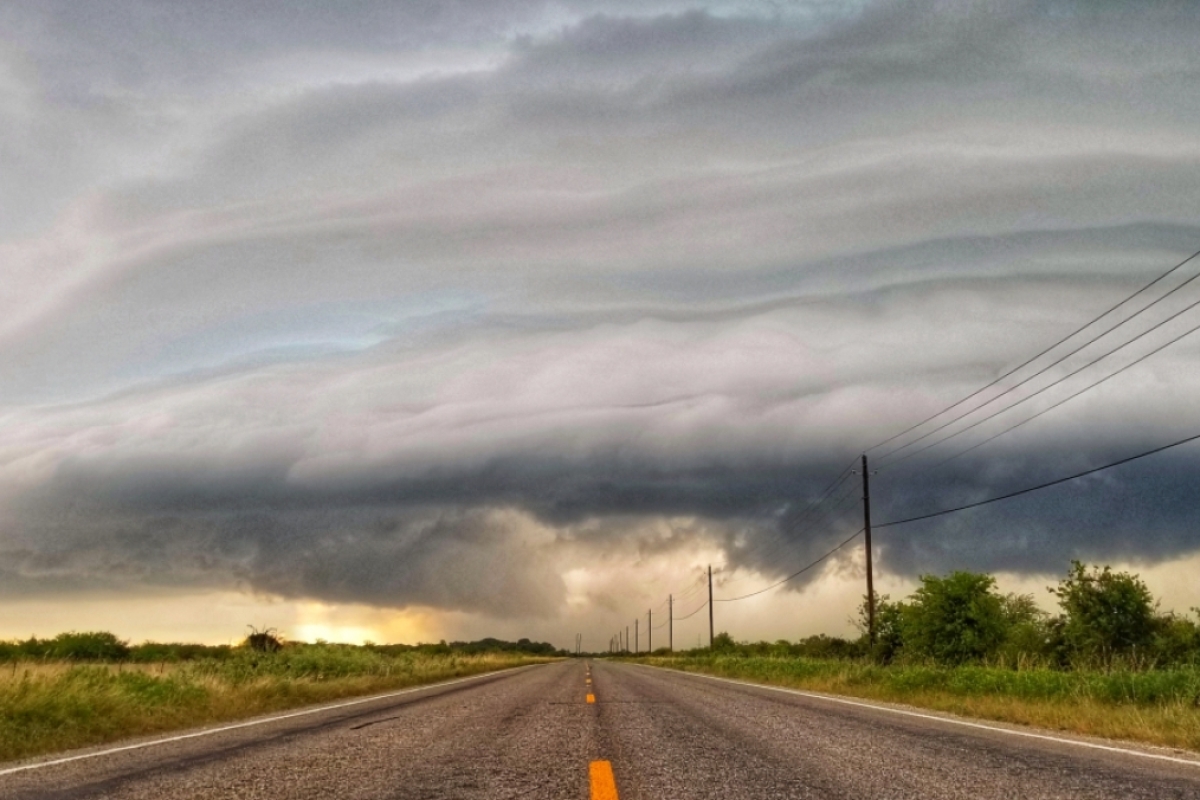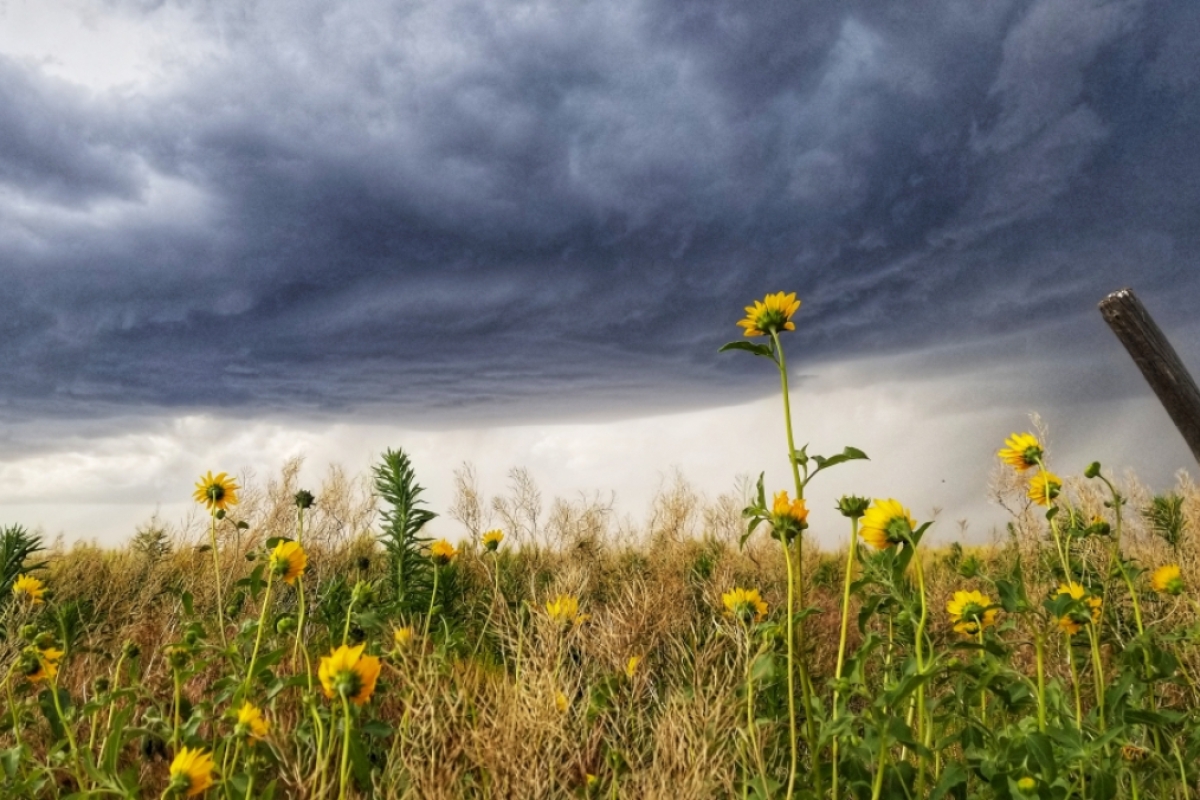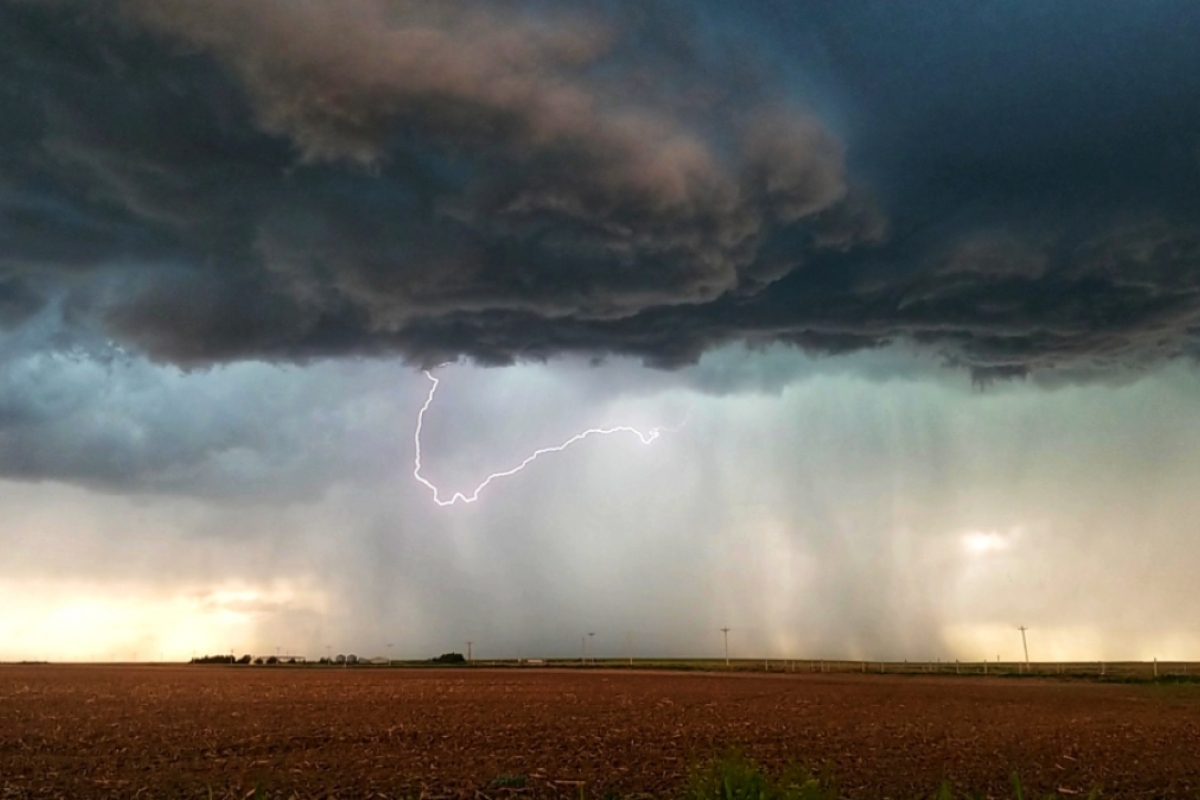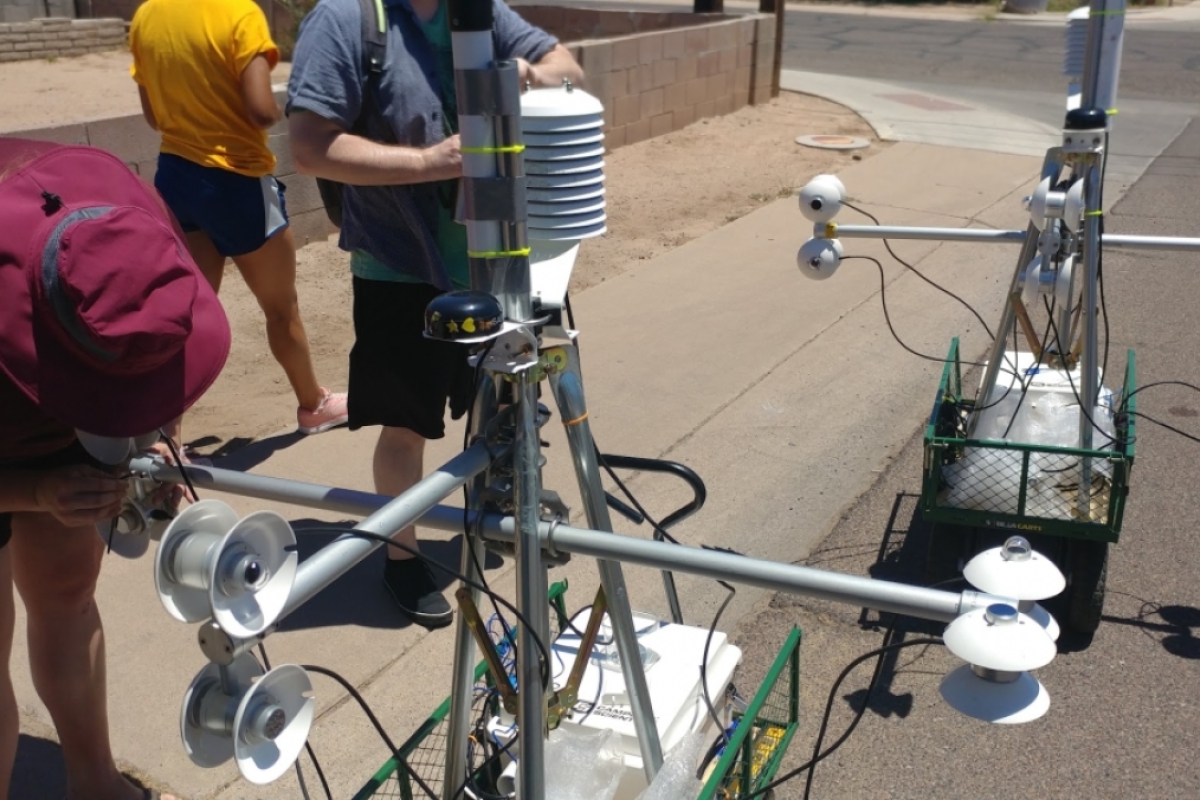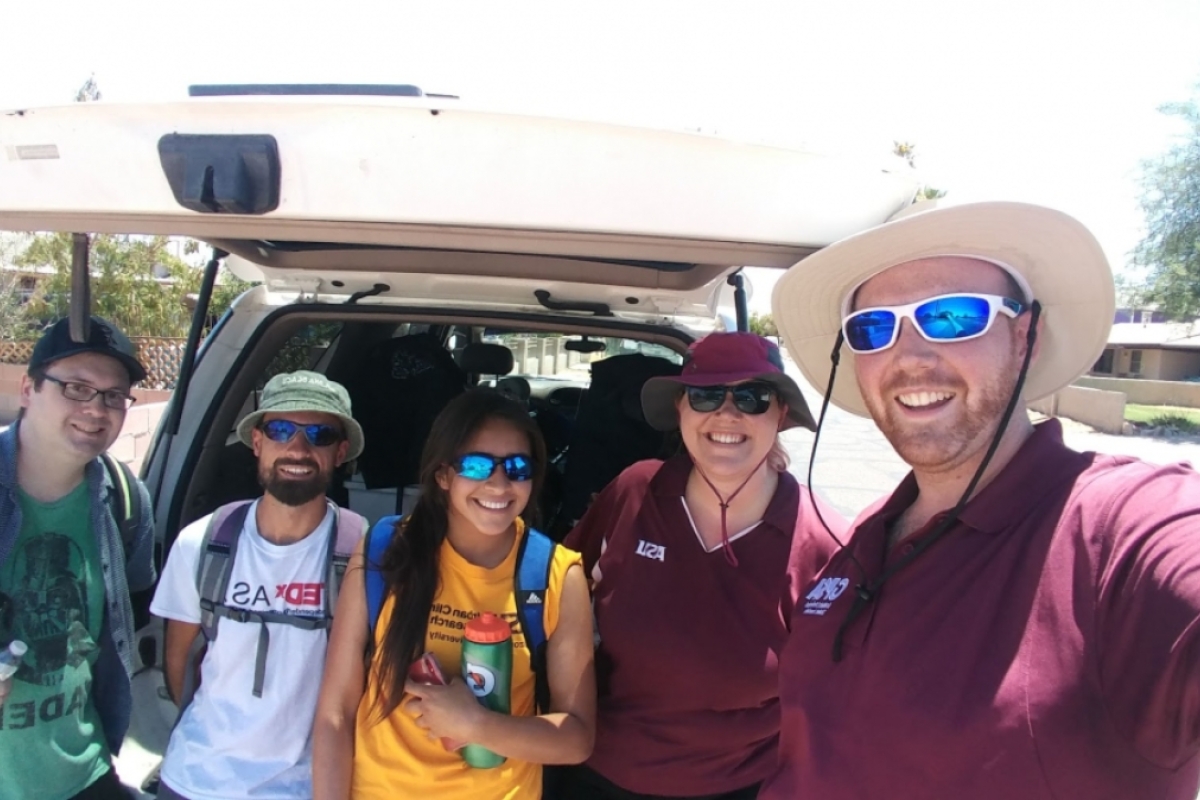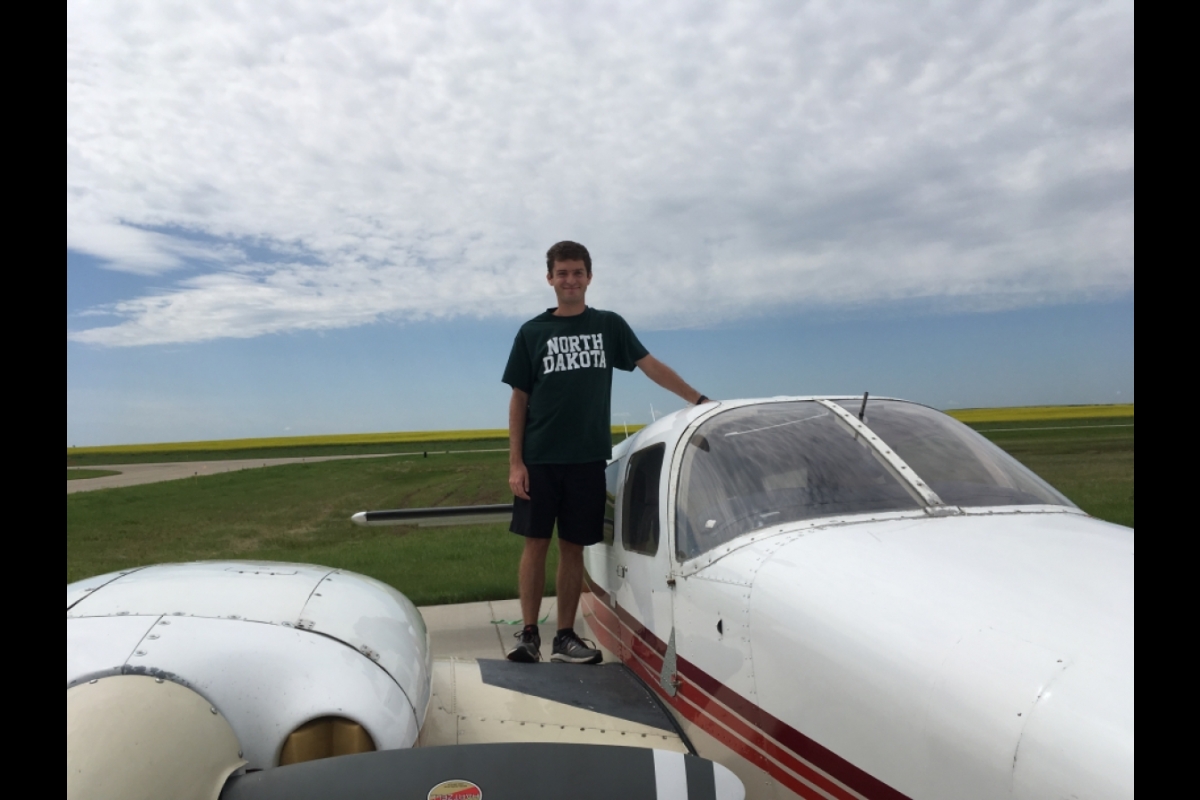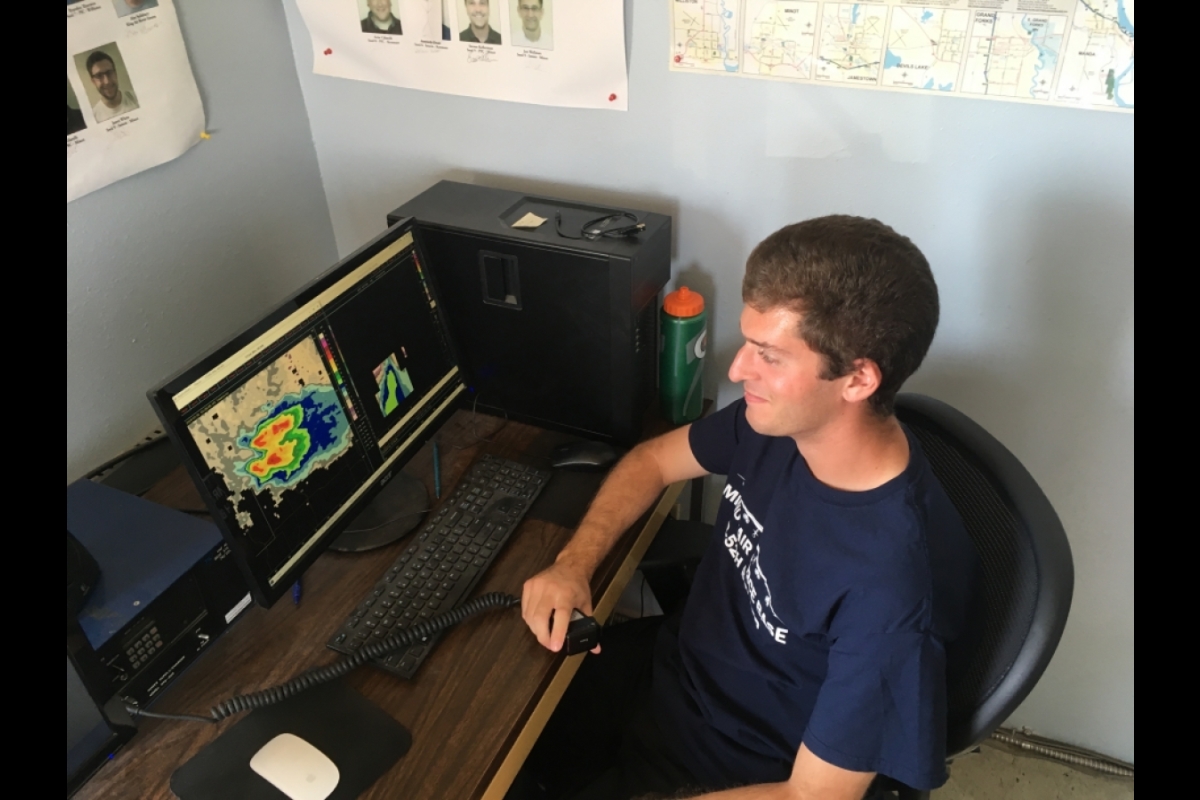ASU meteorology-climatology students take their skills to the field during summer break

Jordan Evans, who is double-majoring in meteorology-climatology and broadcast journalism, spent the summer as an intern with CNN Weather.
Weather is active, moving and constantly changing. It's intriguing to watch as storms develop on the horizon. For students studying meteorology-climatology in the School of Geographical Sciences and Urban Planning at Arizona State University, they take that intrigue to new levels as they learn more about how weather events happen through storm chasing, how the heat impacts our communities, how best we can communicate weather events to large audiences and how we can influence weather events. Four students spent their summer doing just that, including:
• Mary Wright, a PhD of geography student, headed across the country to spend 10 days chasing storms throughout Kansas and Texas. In total, she witnessed seven storms and enjoyed exploring small towns along the journey.
• Peter Crank, a PhD of geography student, spent the summer gathering important data on heat in certain Phoenix neighborhoods and developed models for how incorporating shade structures and plant life can help make the area cooler for residents. He also spent the summer working to better understand the physiological and psychological impacts associated with exposure to heat.
• Jordan Evans, a senior who is double-majoring in meteorology-climatology and broadcast journalism, traveled to Atlanta to intern with CNN Weather. His internship gave him the chance to test his broadcasting skills in a state-of-the-art studio, as well as the opportunity to create important relationships with CNN and other heavy-hitters in broadcast meteorology, like the Weather Channel.
• Samuel Meltzer, who recently earned his bachelor’s degree in meteorology-climatology and is currently enrolled in the schools’ Master of Advanced Study in Geographic Information Systems, secured a summer job as a radar meteorologist in North Dakota where he assisted with their cloud seeding project. Meltzer played an integral role in helping the organization select which clouds to target for hail damage reduction and rain enhancement for the benefit of the area’s agricultural industry.
We asked each of them about their experiences this summer.
Mary Wright
Question: What makes storm chasing so exciting?
Answer: I find storms to be stunningly beautiful to experience, not only visually, but through sounds, smells and the sensation of the wind moving around you. As a meteorologist, it's really fun to experience the whole process of starting in the morning with a forecast discussion, looking at maps and model outputs to actually standing there, on some dirt road in Kansas, staring up at this massive, gorgeous supercell thunderstorm. To go from something so dry and technical to something so beautiful just seems utterly incompatible, and I love every part of it.
Q: Did you learn anything new this summer?
A: This summer, I learned what updraft helicity is and how to pronounce Refugio, a town in Texas — unless you're from Texas, I guarantee it's not what you think!
Q: What inspired your interest in storms/storm chasing?
A: I grew up in Arizona and I've always loved monsoon season. My parents taught me to appreciate going outdoors and experiencing nature, and we would often all pile into the minivan and just drive to wherever the storms were. Most people wait for storms to come to them and then complain that storms "avoid" their neighborhood, but I've always had the desire to go to the storm instead.
Q: What would you recommend to other students who are interested in hitting the road to chase a storm?
A: Take a friend so one person can drive and the other person can keep an eye on the storms. Car accidents kill far more storm chasers than tornados ever have. Otherwise — good luck, be safe, be patient and just get out there!
Peter Crank
Q: Why is investigating urban heat important to you?
A: Heat is the leading atmospheric cause of death in the U.S. It does not have the fanfare, panic and gripping imagery that other natural hazards have, like tornadoes and hurricanes. It creeps up on us and catches us when we least expect it. I study this in the city because our human activity and society is centered there and those activities exacerbate the issue. I want to study urban heat because it is something that impacts everyone and being able to help people is something that I want to be able to do in my research and my career.
Q: What do you wish more people knew about urban heat?
A: First, that new isn't always better. Just because the building is new, the technology is new, doesn't mean that they are safer. Previous generations were able to cope with difficult environments without the latest technology. Sometimes, using and incorporating traditional designs into our modern lives can help us mitigate the impact of heat better than making the building more insulated (this makes the building more dependent on the grid). Examples range from verandas and porches to high ceilings with fans. Here in the Southwest, indigenous peoples used the rock and soil to create their homes that would be resistant to the heat.
Second, that heat has a vast impact on our lives. It's not just that we sweat, get dehydrated and spend more on AC during the summer. The heat takes a toll on us emotionally and mentally, too. Our bodies do not respond to heat in only physiological ways, but they also respond psychologically. Irritability, tension, stress, weariness, restlessness, and anxiety are all psychological responses our bodies have to being exposed to extreme heat over the long term.
Q: Did you have any eye-opening experiences through your research this summer?
A: This summer, a lot of my research felt independent of oversight. I was given the responsibility of organizing, planning, preparing, and executing the fieldwork without a lot of input from my committee. This was new and a bit alarming as all of the weighty responsibility fell to me. This experience also meant that I was working with undergraduates who were helping me and they were dependent on me for instructions on what to do and how to conduct the research. The recognition that others (both faculty and students) were looking at me as an independent research was eye-opening to how I would be expected to function in the future working in research as an independent researcher with the government, a university or in industry.
Jordan Evans
Q: What was your most memorable moment from working at CNN?
A: My most memorable moment working at CNN was recording national weather segments in the main studio inside the World Headquarters in Atlanta. This involved a 120-foot long LED screen, and the awesome augmented reality that you see on HLN Morning Express.
Q: What was the best piece of advice you were given this summer?
A: The best piece of advice I was given this summer was to stay ahead of the industry as much as you can, because it is quickly changing and the general public continues to want more and the attention span continues to be less.
Q: How did you spend most of your days as an intern?
A: Most of my days were spent doing something different almost every day! This is why I enjoyed my experience and why I chose this as a career, because it is always something different. Weather is never the same. At CNN, I was either writing stories for cnn.com, or I was preparing graphics for on-air use, or I was practicing my tape in the weather studio in front of the camera, receiving advice from some of the best in the business.
Q: What new skills did you learn?
A: I learned so much, partially because I have never experienced weather done at the national level. I left this internship telling my bosses that the internship could alone be split up into four to five college classes. The best thing I took away from this internship was learning how to use augmented reality to deliver a forecast, or explain weather phenomena. It is the future of weather reporting on TV, and I knew it would give me a leg up in the industry when I start to apply for jobs in the spring.
Q: What was the best part about being in Atlanta for the summer?
A: The best part about being in Atlanta was being able to experience a new, big city in a different area. There are so many meteorology opportunities there, not just for TV. This is huge when it comes to networking. I not only connected with the CNN meteorologists, but was able to visit the Weather Channel and some of the local stations. I could see myself working in Atlanta in the future.
Samuel Meltzer
Q: What was your knowledge of cloud seeding before this summer internship?
A: I learned about cloud seeding in the weather modification chapter of Dr. Randall Cerveny’s climate change class. I knew it was used domestically since the 1940s, such as in the western United States for snowpack enhancement. However, I did not know about the North Dakota Cloud Modification Project before this summer internship.
Q: What was your favorite part of the internship?
A: I have always found thunderstorms exciting, but tracking them and launching airplanes on missions to seed them was even better. It was also cool talking to the pilots while they were in the air and seeing on our radar screen where the aircraft were in relation to the storms. There were a few storms that hit our radar site head-on. Some storms were far more intense than what we usually see in the Phoenix area.
Q: What do you wish more people knew/understood about cloud seeding?
A: I wish people not only knew that clouding seeding can be done, but that the process is fairly simple and can improve our lives. Most of the people who knew about our particular project were local farmers and long-time residents. People I talked to in North Dakota who were not involved in our project were not even aware that seeding was happening. Based on what I saw and learned in North Dakota, I believe that cloud seeding could be quite helpful not only for rain enhancement, but also for hail suppression in other parts of the country.
Q: What new skills did you learn?
A: As a radar meteorologist, I learned what to look for to find thunderstorms suitable for cloud seeding. During missions, I learned about communications with aircraft and what information pilots needed from the ground to have a successful mission. Communications went both ways. The pilots would also provide us with vital storm information that we could not access from ground level.
More Environment and sustainability
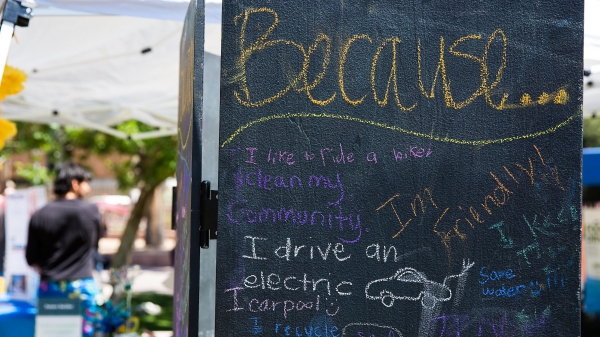
Earth Day celebrations focus on making our planet a priority
On April 22, Earth Day is celebrated across the country and in nearly 193 countries around the world. Arizona State University…
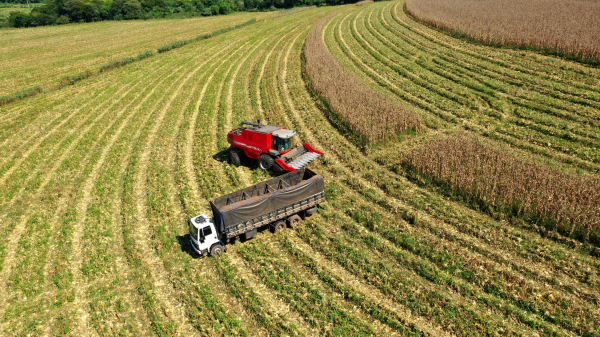
ASU scientist studies how bans, regulations on food technology affect consumer acceptance, perceptions
How do people process scientific developments with outside influences, warnings, biases and others’ opinions filtering in? That…

ASU team's research leads to new law protecting mobile-home dwellers
Arizona Gov. Katie Hobbs signed a law earlier this month that guarantees mobile-home owners’ right to install cooling measures,…
